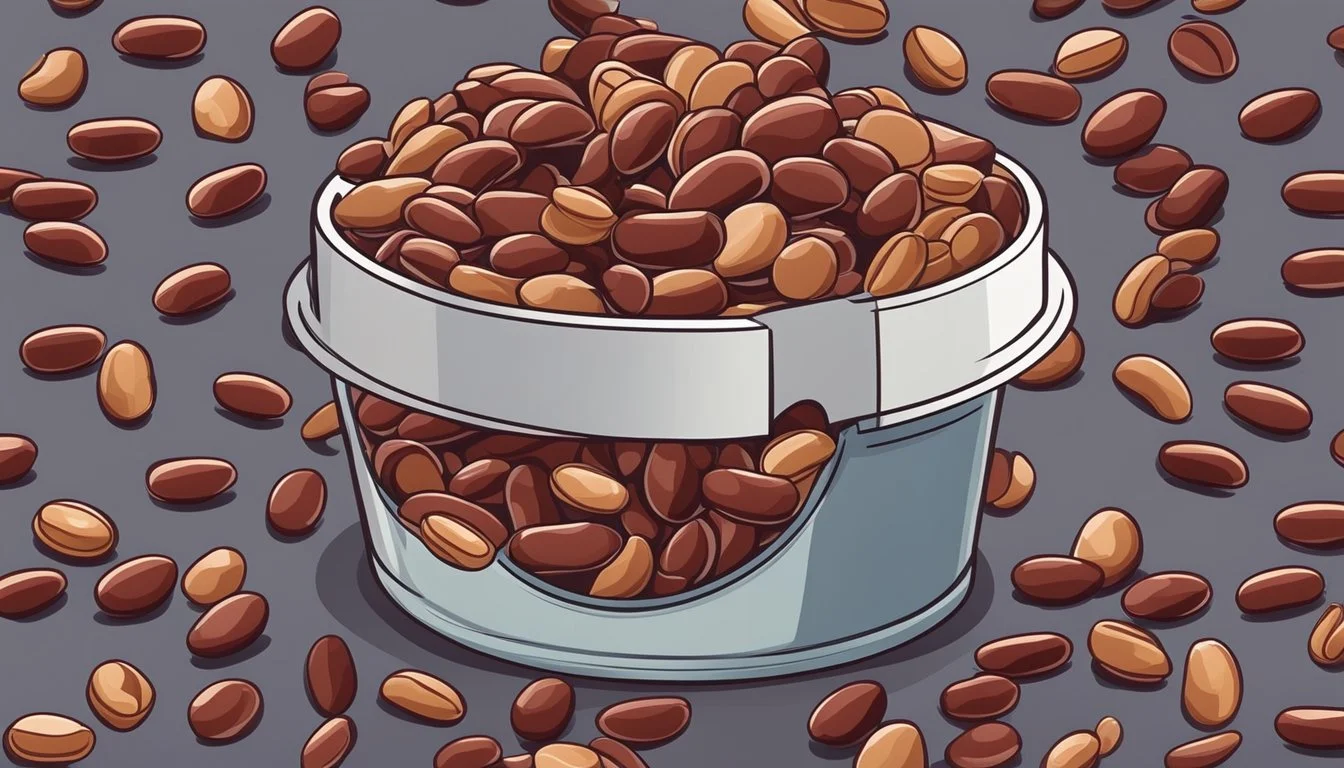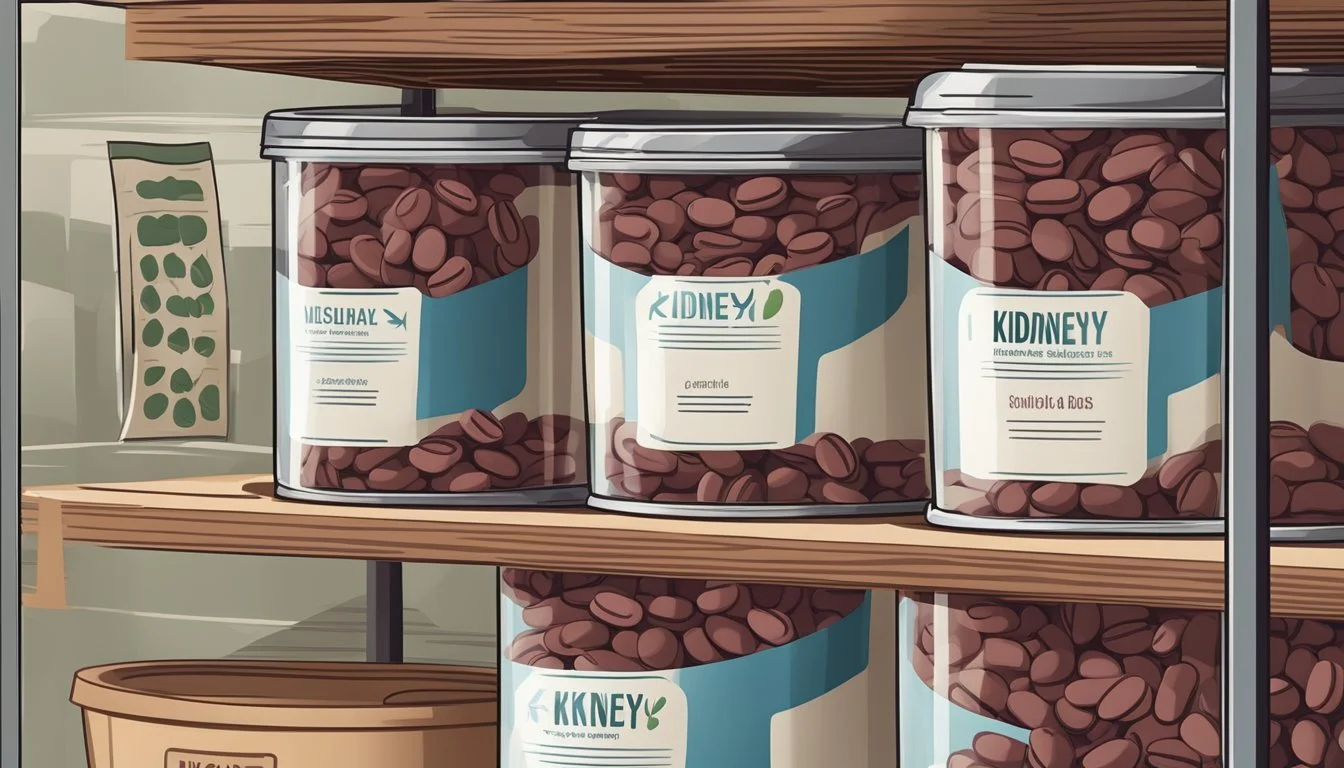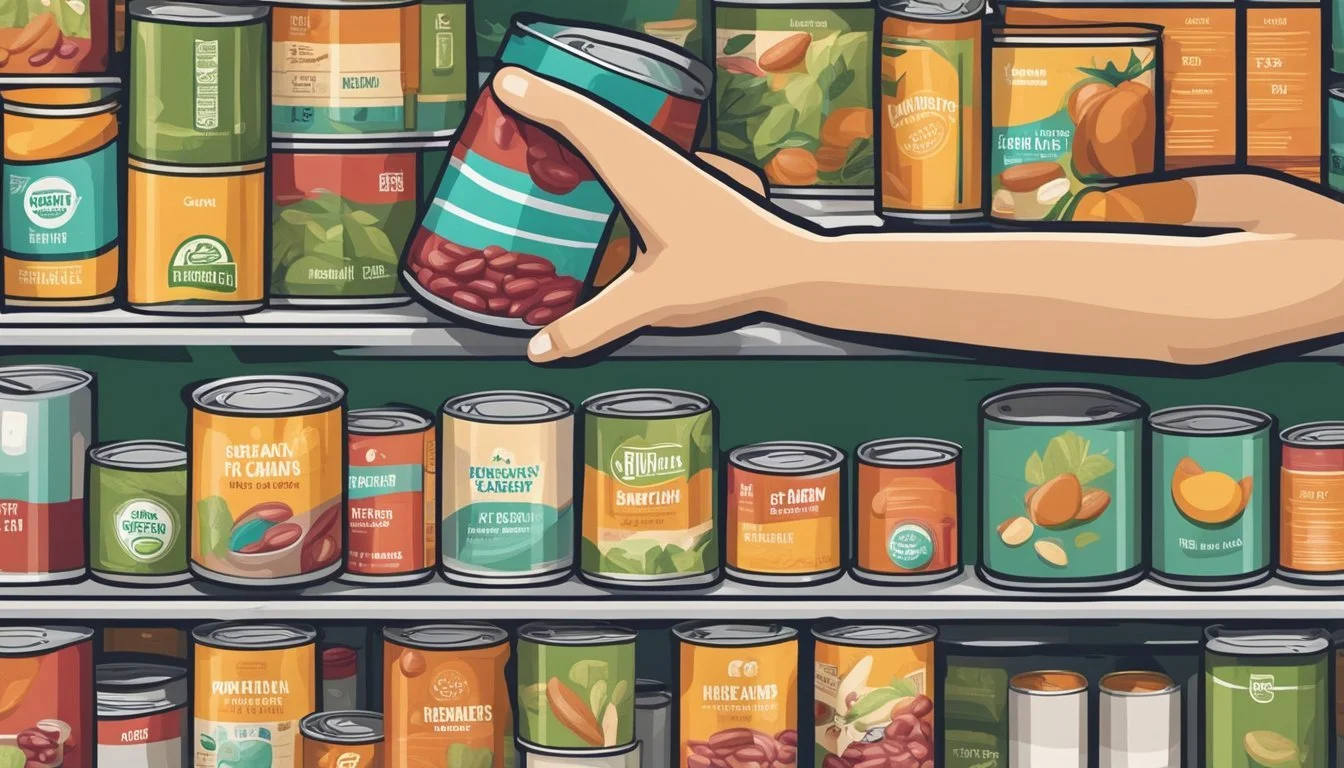Does Kidney Beans Go Bad?
Understanding Shelf Life and Storage
Kidney beans are a nutritious legume, rich in protein, fiber, and essential minerals like iron, making them a valuable component of a healthy, plant-based diet. Packed with nutrition, these beans are prized for their role in maintaining good health. Yes, kidney beans can go bad, just like any other food item.
When stored properly, dried kidney beans can last for years, retaining their nutritional value and flavor. However, once cooked, they should be consumed within a few days or properly frozen to avoid spoilage. It's essential to know how to store kidney beans correctly to benefit fully from their nutritious profile and delicious taste.
Understanding Kidney Beans
Kidney beans, a type of legume, are popular for their nutritional value and versatile culinary uses. They come in various colors, each with unique characteristics.
Varieties of Kidney Beans
Kidney beans come in several varieties, including red kidney beans and white kidney beans. The red types, also known as Rajma in India, are common in chili and stews for their robust texture. White kidney beans, or cannellini beans, have a more delicate flavor and are often used in salads and soups. Each variety offers different culinary experiences but generally provides similar nutritional benefits.
Nutritional Profile
Kidney beans are a rich source of protein, making them an excellent plant-based protein option. They are also high in dietary fiber, which aids in digestion. In addition, kidney beans provide essential vitamins and minerals such as B vitamins, iron, potassium, and magnesium. They are low in calories, carbohydrates, and fat, making them a healthy addition to any diet. The high fiber content also helps in controlling blood sugar levels, which is particularly beneficial for people with diabetes.
Culinary Uses
Kidney beans are incredibly versatile and are used in a variety of dishes. They must be soaked and cooked properly due to the presence of natural toxins, especially in their raw form. Once prepared, they can be added to salads for a protein boost or cooked in soups and stews to add texture and nutritional value.
In chili, kidney beans absorb flavors well and contribute to the dish’s hearty consistency. They are also excellent in dishes like rice and beans, and can be mashed and used as a filling for burritos. Cooking methods vary, including boiling, simmering, and pressure cooking, to ensure they are properly cooked and safe for consumption.
Shelf Life and Storage
Kidney beans have different storage requirements and shelf lives depending on their form—dried or canned. Proper storage conditions can significantly extend their usability, ensuring they remain a staple in your pantry.
Dried Kidney Beans
Dried kidney beans can last for an extended period when stored correctly. When kept in a cool, dry place like a pantry, they can remain fresh for up to 12 months or more. For best results, store them in airtight containers to prevent moisture and pests from degrading the beans.
Over time, dried beans may lose some of their moisture, especially after 1-2 years. This increased dryness can extend cooking times, so it's essential to soak and cook them longer if they are older. Properly stored, dried kidney beans are a sustainable pantry staple.
Canned Kidney Beans
Canned kidney beans provide a convenient and quick cooking option but have a shorter shelf life compared to dried beans. When unopened and stored in a pantry, canned beans generally have a "best by" date ranging from 2-5 years.
Once opened, transfer unused beans to a plastic container or a glass container with a tight lid and refrigerate. These refrigerated beans should be consumed within 3-4 days. For more extended storage, freezing opened canned beans in an airtight container can preserve them for an additional 2-3 months.
Storage Tips
To maintain the quality and extend the shelf life of all types of kidney beans, follow these storage tips:
Use airtight containers: This prevents exposure to moisture and pests.
Keep in a cool, dry place: A pantry is ideal for both dried and canned beans.
Refrigerate after opening: For canned beans, use a plastic container or glass container and consume within days.
Freeze for longer storage: Both cooked dried and opened canned beans can be frozen. Use airtight containers to prevent freezer burn.
Monitor expiration dates: Ensure that dried beans are used within the recommended time frame to ensure quality cooking results.
By adhering to these tips, you can maximize the shelf life and quality of your kidney beans, making them a reliable and nutritious addition to your meals.
Signs of Spoilage
To ensure the safety and quality of kidney beans, it's crucial to recognize signs of spoilage. These signs can include visual and texture changes as well as alterations in odor and flavor.
Visual and Texture Changes
Spoiled kidney beans often exhibit noticeable visual changes. Look for discoloration, such as dark spots or an overall dull appearance. Additionally, mold growth is a clear indicator of spoilage.
Kidney beans should have a smooth texture. Beans that feel slimy or unusually soft should be discarded. These texture changes can signal bacterial growth.
Additionally, broken or shriveled beans may indicate they are past their prime. Maintaining proper storage conditions helps preserve their quality and prevent spoilage.
Odor and Flavor
Another critical sign of spoilage is an off-odor. Fresh kidney beans have a mild smell. If they emit a sour or unusual odor, they should not be consumed.
Taste the beans before using them in your dishes. Spoiled beans will possess an off or bad flavor. This ensures they maintain their quality without posing a health risk.
Always store beans in a cool, dry place and check for signs of spoilage before consumption. This vigilance prevents health risks and promotes food safety in your kitchen.
Food Safety and Health Concerns
Kidney beans are nutritious but can pose health risks if not properly prepared. Ingesting raw or improperly cooked beans can lead to serious food poisoning due to toxins like phytohaemagglutinin.
Toxins and Anti-nutrients
Kidney beans contain a naturally occurring toxin called phytohaemagglutinin, a type of lectin. This toxin can cause severe digestive distress and even poisoning if the beans are not cooked thoroughly. The toxin levels in raw beans are high enough that consuming even a few can result in serious health issues.
Boiling beans for at least 30 minutes at 100°C (212°F) effectively reduces the toxin to safe levels. Avoid using a slow cooker to prepare raw beans, as the lower temperatures can make the toxins more concentrated.
Symptoms of Food Poisoning
Symptoms of food poisoning from kidney beans can appear rapidly, often within a few hours of ingestion. Common symptoms include vomiting, diarrhea, and nausea. These symptoms result from the body's reaction to the toxins in the undercooked beans.
Vomiting and diarrhea can lead to dehydration if not managed promptly. If severe symptoms occur, medical attention may be necessary to avoid further complications. Always be cautious when consuming foods that pose a risk of foodborne illness.
Safe Preparation
To ensure kidney beans are safe for consumption, proper cooking methods must be followed. Start by soaking dried beans in water for at least 5 hours. After soaking, discard the water and rinse the beans. Boil the beans in fresh water for at least 30 minutes at 100°C (212°F).
Canned kidney beans are a safe and convenient option as they are pre-cooked and ready to use. If using dried beans, always avoid cooking them in slow cookers unless they have been pre-boiled. Proper preparation is key to preventing foodborne illness from kidney beans.
Maximizing Shelf Life and Quality
Proper handling and storage play critical roles in extending the shelf life and maintaining the quality of kidney beans. Effective freezing and thawing techniques can also enhance their longevity. Utilizing apps that provide storage guidance can be particularly helpful.
Proper Handling and Storage
Cooked kidney beans should be cooled to room temperature before being placed in airtight containers for refrigeration. Label containers with the date of storage to track freshness. Uncooked beans should be kept in airtight containers in cool, dry places to prevent moisture and contamination.
For canned kidney beans, store unopened cans in a cool, dry pantry and use oxygen absorbers to extend shelf life. Once opened, transfer any unused beans to airtight containers.
Freezing and Thawing Techniques
To freeze cooked kidney beans, use freezer-safe bags or airtight containers. Beans should be divided into smaller portions to simplify thawing later. Label each container with the date of freezing.
To thaw, transfer the beans from the freezer to the refrigerator the night before use, or use the defrost setting on a microwave. Thawing in the fridge preserves texture and flavor better than rapid thawing methods.
Using FoodKeeper and Other Apps
The FoodKeeper app, developed by the USDA, offers valuable guidance on the storage and shelf life of various foods, including kidney beans. The app provides reminders for expiration dates and optimal storage conditions.
Using such apps helps in planning storage efficiently and reducing waste. Users can input the date of storage and receive notifications before the beans reach their expiration dates, ensuring optimal quality and freshness.
Creative Uses and Recipes
Kidney beans are versatile and nutritious, making them perfect for a range of dishes from salads to hearty soups. Explore how to incorporate them into various recipes and alternative cooking methods to enhance flavors and textures.
Incorporating into Dishes
Kidney beans can elevate a number of dishes.
Salads: Add cooked kidney beans to salads for a protein boost. Mix with fresh vegetables, lettuce, and a light vinaigrette. They blend well with ingredients like corn, bell peppers, and red onions.
Chili: Combine kidney beans with ground meat, tomatoes, and spices in a slow cooker for a flavorful chili. The beans absorb the rich seasonings, adding depth to the dish.
Soups: Use kidney beans in soups such as Caribbean bean and collard green soup. They provide a nutritious addition that thickens the broth and enhances the meal's heartiness.
Rice and Beans: Try Jamaican rice and peas, where the beans are cooked with coconut milk, adding a tropical twist.
Alternative Cooking Methods
Experiment with different cooking methods to enjoy kidney beans in new ways.
Boiling and Simmering: Start by rinsing the beans. Boil them briefly, then simmer for an hour to soften. This method retains their texture and taste.
Slow Cooker: Use a slow cooker to cook kidney beans with minimal effort. Combine beans with spices, vegetables, and broth. Let it cook slowly until the beans are tender.
Baking: Make kidney bean meatballs or veggie burgers for a hearty meal. Mix the beans with breadcrumbs, onions, and spices before baking.
Reheating: Cooked kidney beans can be reheated in soups or stews. Ensure they reach a safe temperature to enjoy their savory flavor.
Purchasing and Selection
When purchasing kidney beans, selecting fresh and high-quality beans is vital. This ensures better flavor and nutritional value. Focus on identifying signs of freshness and quality during your purchase.
Identifying Freshness
Visual Inspection: Fresh kidney beans should have a uniform color, typically a deep red. Avoid beans that appear discolored, as this may indicate aging or contamination.
Texture: The beans should be hard and smooth to the touch. Any sign of wrinkles can mean that the beans have been stored for a long time and might not have the best quality.
Smell: Fresh kidney beans should not have any off or musty odors. Any unpleasant smell could signify that the beans are old or have been stored improperly.
Choosing Quality Beans
Source: Purchase kidney beans from a reputable source, such as well-known grocery stores or markets with high turnover rates. This ensures the beans are likely fresher.
Packaging: Check the packaging for any signs of damage or rust, which could compromise the beans' quality. Sealed, intact packages are preferred to maintain freshness.
Organic Options: Choosing organic kidney beans can be a better option as they are grown without synthetic pesticides and fertilizers. This can lead to a fresher and potentially healthier product.
Storage Instructions: Pay attention to any storage instructions on the packaging. This can help maintain the beans' freshness and quality after purchase. Proper storage can extend the shelf life, preserving their taste and nutritional value.
Conclusion
Kidney beans are a versatile and affordable pantry staple.
When properly stored, they have a long shelf life, especially in dried or canned forms.
Nutritional benefits include being rich in protein, fiber, vitamins, and minerals.
They should always be cooked thoroughly to avoid toxicity.
Shelf life can be extended with proper storage.
Check expiration dates and store in cool, dry places.
Kidney beans, essential for a healthy diet, must be handled right for optimal benefits.







